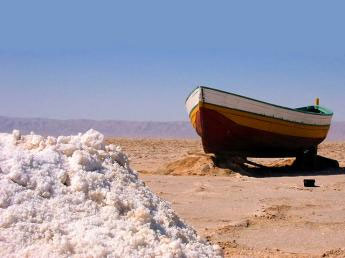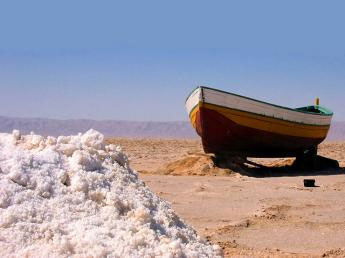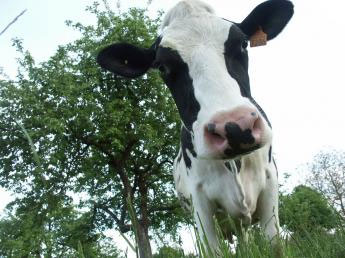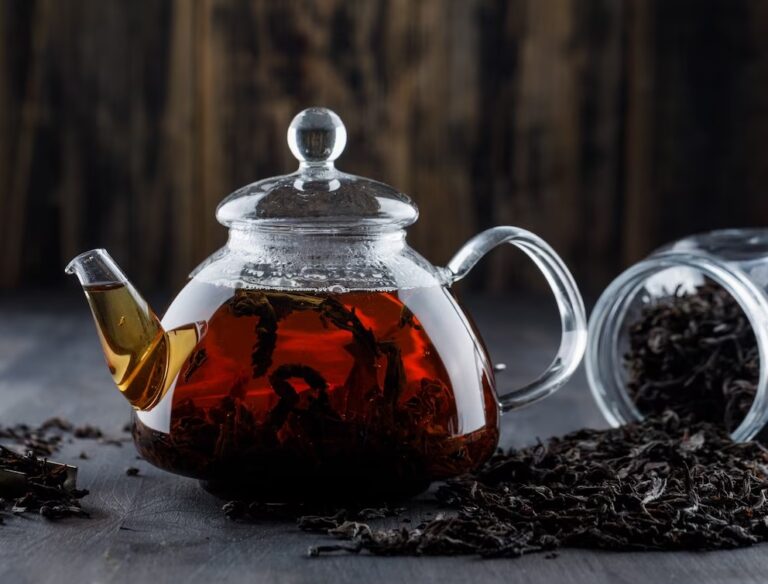Unrefined Ocean Sea Salt versus Refined Salt – Table Salt
Unrefined Ocean Sea Salt versus Refined Salt – Table Salt. Ocean water is currently an average of 3.5% (by weight) percent dry matter. Dry ocean salt is composed of 80 elements – minerals. Salt is an essence of Life. Natural Salt is an essential element in the diet of not only humans but of animals, and even of many plants.
versus pure NaCl (99.9%).
Use of natural salt is as old as human history. Natural Salt is one of the most effective and most widely used of all food seasonings and natural preservatives.
Natural salt is a source of 21 essential and 30 accessory minerals that are essential to our health. According to some sources, other elements are up to 5% of dry ocean salt. Refined salt contain only 0.1 – 0.5% other elements.
Unrefined sea salt contain 98.0 % NaCl (sodium-chloride) and up to 2.0% other minerals (salts) : Epsom salts and other Magnesium salts, Calcium salts, Potassium (Kalium) salts, Manganese salts, Phosphorus salts, Iodine salts, .. all together over 100 minerals composed of 80 chemical elements … Composition of crystal of ocean salt is so complicated that no laboratory in the world can produce it from its basic80 chemical elements.
Nature is still better chemist than people.
This salt has been used since begining of life, by ocean plants, by animals and by people
(Percentage is referring to the percentage of dry matter. Salt can contain high percentage of water.)
Refined salt (Table Salt) is 99.9% NaCl (sodium-chloride), (chemical as clean as Heroin or White Sugar) . It almost always contain additives, like 0.01% of Potassium-Iodide (added to the salt to avoid Iodine deficiency disease of thyroid gland), Sugar (added to stabilize Iodine and as anti-caking chemical), Aluminum silicate.
Thanks to Potassium-Iodide, we now have an epidemic of Hyperthyroidism.
What kind of additives are in food grade salt?
Is there a salt on the food market that is without additives? Some sodium chloride marketed as “sea salt” is promoted as containing no additives or as all “natural.” There is some koshering salt products that are free of additives. It may be a little coarser than typical round can table salt. The Food and Drug Administration requires food grade salt labels to show all additives. Thus, you can check the salt container to determine if additives are present.
All food grade salt available in the U.S. must comply with the National Academy of Science’s Food Chemicals Codex Sodium Chloride Monograph (1996). It specifies that salt may contain up to 2% of suitable food-grade anticaking, free flowing, or conditioning agents. Included in the 2%, salt may contain up to 13-mg/kg sodium ferrocyanide (YPS, yellow prussiate of soda) or up to 25 mg/kg of green ferric ammonium citrate (seldom used),, either of which prevents caking in table salt. All of these additives are food grade and listed separately in Food Chemicals Codex as such. In addition potassium iodide is added at levels of 0.006 to 0.010% (as KI) to prevent iodine deficiency disorders. About half of the table salt sold in the U.S. is iodized and is available at the grocery store at the same price as plain salt.
Dextrose, when added (typically at about 0.04%), acts as a stabilizer for potassium iodide in salt. KI tends to dissociate into “free” iodine (I), which vaporizes and may be lost from the salt. Good packaging techniques in the U.S. minimize the problem (as well as the caking problem), but KI stabilizing agents are added anyway to ensure that iodized salt retains its ability to combat iodine deficiency disorders, even when it sits in the kitchen for long periods of time.
Beware of “Sea salt” Labels
On the labels of many packaged food, in supermarkets as well as health food stores the name “sea salt” appears often. Reading this, we feel safe and reassured, thinking that when it comes to the salt part of the ingredients, all is fine…


But All Is Not Fine!
This supermarket or health food store “sea salt” has been totally refined. At its origin, it may have come from the sea, but:
• It has been harvested mechanically from dirt or concrete basins with bulldozers and piped through metal conduits;
• put through many degrading artificial processes;
• heated under extreme heat levels in order to crack its molecular structure;
• robbed of all of its essential minerals that are essential to our physiology;
These elements are extracted and sold separately to industry. Precious and highly prized by the salt refiners, these bring more profits than the salt itself.
• further adulterated by chemical additives to make it free- flowing, bleached, and iodized.
To call what remains “sea salt” would be quite misleading.
In addition, harmful chemicals have been added to the processed, altered unnatural substance to mask and cover up all of the impurities it has. These added chemicals include free flowing agents, inorganic iodine, plus dextrose and bleaching agents. Standard salt additives: Potassium-Iodide (added to the salt to avoid Iodine deficiency disease of thyroid gland), Sugar (added to stabilize Iodine and as anti-caking chemical), Aluminum silicate.
Real Ocean Sea Salt is produced from unseparated salt. That is why it is slightly darker. When producing table salt, other mineral salts are used for chemical industry, or are washed back into the sea, or are used for animals. If we humans just could eat as good as animals!? Natural salt is not white and it is not dry. It is a little gray with minerals and feels damp or clumps in humidity.
Elements in Light Grey Celtic Sea Salt® in milligrams per 1/4 teaspoon (one serving size):
Most recent analysis demonstrated that Celtic Sea Salt® contained at least 75 minerals and trace elements. The following lists the most predominant elements revealed by this analysis.
|
|
mg per 1/4 tsp |
% |
|
mg per 1/4 tsp |
% |
|
Chloride |
601.25 mg |
50.90% |
Zinc |
0.03 mg |
.00275% |
|
Sodium |
460 mg |
33.00% |
Copper |
0.02 mg |
.00195% |
|
Sulfur |
9.7 mg |
.820% |
Erbium |
0.02 mg |
.00195% |
|
Magnesium |
5.2 mg |
.441% |
Tin |
0.02 mg |
.00192% |
|
Potassium |
2.7 mg |
.227% |
Manganese |
0.02 mg |
.0018% |
|
Calcium |
1.5 mg |
.128% |
Cerium |
0.02 mg |
.00172% |
|
Silicon |
1.2 mg |
.052% |
Fluoride |
0.01 mg |
.00109% |
|
Carbon |
0.6 mg |
.049% |
Rubidium |
0.01 mg |
.00084% |
|
Iron |
0.14 mg |
.012% |
Gallium |
0.01 mg |
.00083% |
|
Aluminum |
0.11 mg |
.0095% |
Boron |
0.01 mg |
.00082% |
|
Praseodymium |
0.04 mg |
.0029% |
Titanium |
0.01 mg |
.00079% |
|
Strontium |
0.03 mg |
.00275% |
Bromine |
0.01 mg |
.00071% |
This is a partial analysis, if you are interested in the full analysis please call.
Light Grey Celtic Sea Salt® contains 33% Sodium, 50.9% Chloride, 1.8% Minerals and Trace Elements and 14.3% moisture.
Analysis performed by Western Analysis, Inc. for The Grain & Salt Society®. For verification: Western Analysis, Inc. 2417 South 2700 West Salt Lake City , UT 84119 (801)973-9238 Fax (801) 973-7635
|
Nutrient |
Daily Value |
|
Sodium |
2,400 milligrams |
|
Potassium |
3,500 milligrams |
|
Calcium |
1000 milligrams |
|
Iron |
18 milligrams |
|
Phosphorus |
1000 milligrams |
|
Iodine |
150 micrograms |
|
Magnesium |
400 milligrams |
|
Zinc |
15 milligrams |
|
Copper |
2 milligrams |
|
Manganese |
2 milligrams |
|
Chloride |
3,400 milligrams |
About the minerals and trace elements:
Although certain body processes are attributed to certain minerals, each mineral needs one or more other minerals to properly function. For instance, a proper calcium-phosphorus balance is necessary to the body in that an imbalance reduces resistance to disease, increases fatigue, weakens intellectual faculties and leads to premature ageing. Magnesium can only be used if calcium and phosphorus are in a proper balance. An overabundance of one mineral can result in a deficiency of another. Obtaining minerals from whole food sources provides the body with the wide variety of minerals it needs. Supplementing with one or two minerals is rarely a good idea unless it is under the supervision of a doctor or nutritional counselor.






Today people fear salt and we are witnessing a virtual ban on consuming products with high sodium contents and this is a major concern of biologists. The use of real sea salt-free diets are showing up in the reality of our modern world as society is coming apart. It is basically a starvation of macro- and trace minerals and biological deficiencies cannot be corrected by refined sodium chloride alone.
not sure, sorry, i can only advice you regarding what is healthier.
I am going to market a seasoning product and wondering between sea salt vs table salt as a stabilizer to the product. Which is more likely to prevent caking and humidity to enter the entire product and how to prevent this from happening. I prefer to use sea salt – what is the best product on the market for this purpose…thank you very much